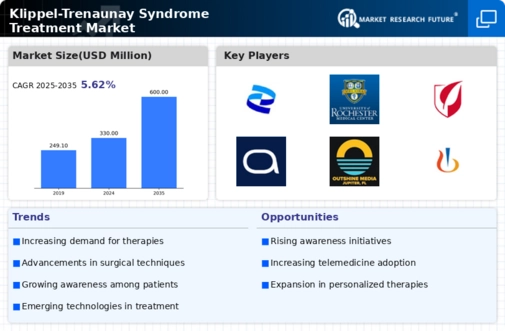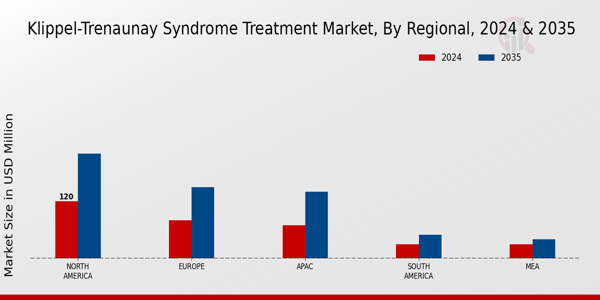Market Trends
Key Emerging Trends in the Klippel Trenaunay Syndrome Treatment Market
The market trends for Klippel-Trenaunay Syndrome (KTS) treatment has seen some remarkable developments that show the growing concern to address particular difficulties associated with this uncommon vascular ailment. Three major features mark the Klippel Trenaunay Syndrome, these are port-wine stains, varicose veins and soft tissue and bone overgrowth. The changing face of KTS therapy in terms of medical research; innovation; therapies and patient focus all have so much to be discussed.
One important trend in the KTS treatment market is shifting interest towards understanding the genetic or molecular mechanisms underlying this syndrome. Studies at different levels including pharmaceutical companies are being carried out by researchers on intricate pathways and factors contributing to development and progression of Klippel Trenaunay Syndrome. This knowledge holds promise for developing targeted therapies that will treat the causes rather than just managing symptoms.
There is recently an increased realization for multidisciplinary comprehensive care among persons with Klippel Trenaunay Syndrome. There are specialized clinics/centres specifically dedicated to KTS management as shown by this shift. These centers have specialists from various fields like vascular surgeons, dermatologists, orthopedic surgeons etc., who work as one to provide personalized integrated care for patients with KTS. More collaborative and holistic approaches are leading to overall improvement in healthcare quality outcomes among those suffering from Klippel-Trenaunay syndrome.
It also affects how KTS is treated due to advances in interventional radiology as well as minimally invasive procedures. For instance, embolization or sclerotherapy may be preferred nowadays for vascular malformations related with Kerry and others [that] include embolization or sclerotherapy which take precedence at present time if compared with other methods. These alternatives result in faster recovery time since traditional surgeries take longer healing periods hence shortening means less complications can possibly occur during treatment process unlike such kind of surgeries. Throughout medicine, the ‘less invasive’ procedure philosophy has been adopted as it puts comfort, safety and ease of patient before anything.
Pharmaceutical companies also supply treatment options for Klippel Trenaunay Syndrome that could reduce symptoms and improve quality of patients’ lives. The KTS treatment market has changed with the advent of new drugs including those targeting angiogenesis and abnormal cell growth. These pharmaceutical interventions may prove more effective in managing Klippel Trenaunay Syndrome through ongoing clinical trials and research studies.
KTS treatment market is highly affected by patient advocacy and awareness initiatives. This effort aims at promoting early diagnosis and timely intervention by educating individuals as well as health professionals about the condition. Besides, from advocacy groups there are support communities for affected individuals and their families addressing even psychosocial emotional aspects of living with Klippel Trenaunay Syndrome.
However, some challenges face these positive trends in KTS treatment markets. Lack of knowledge still remains a hindrance to early detection as well as proper management among healthcare providers and general population in particular. Also, different availability of specialized care along with innovative treatments leads to disparities in healthcare for people suffering from Kerry.















Leave a Comment